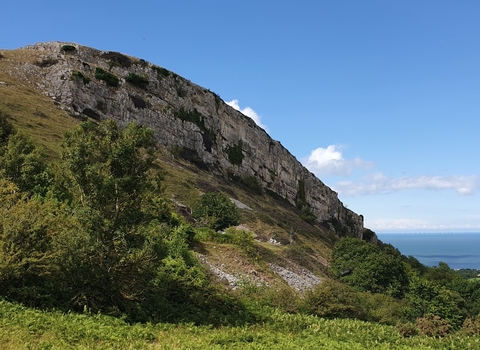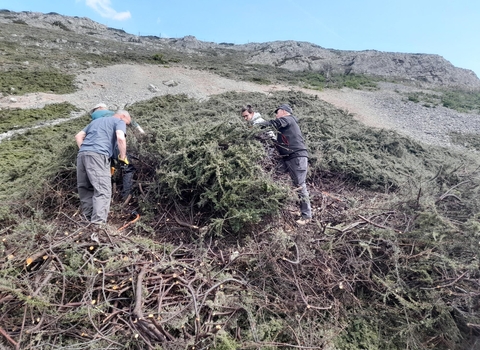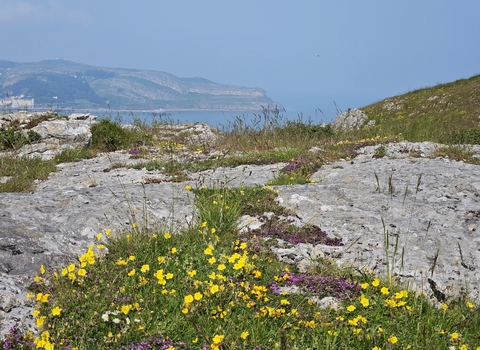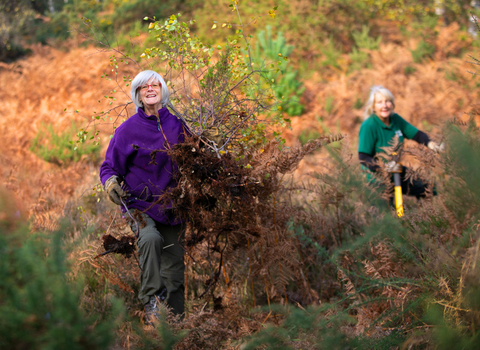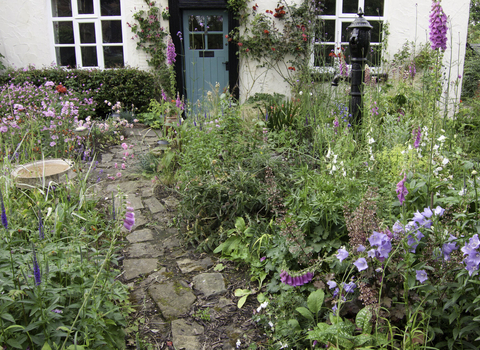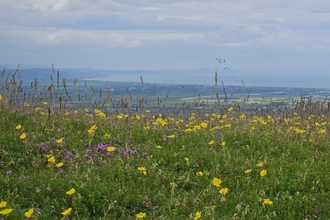Help protect vulnerable limestone grasslands in North Wales
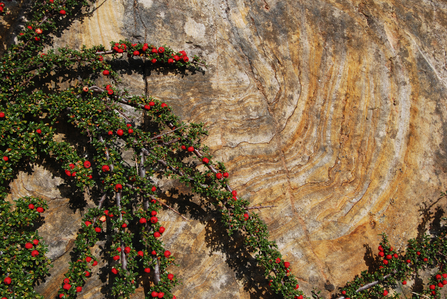
Cotoneaster © Lin Cummins
Join us and help save our threatened limestone grasslands from invasive non-native cotoneaster. Most species originate from East Asia, introduced to the UK in the 19th century as a garden plant, it has now been identified in the top ten species negatively impacting protected sites in Wales.
If not controlled it may cause permanent change to our local landscapes having devastating effects on wildlife. Berries are easily dispersed by birds causing cotoneaster to progressively spread, for this reason, we must act now!

Limestone grassland ©Philip Precey
Why do we want to protect limestone grasslands?
As the days get longer, limestone grasslands should be ablaze with colour. Bountiful swards of flowers include small scabious, kidney vetch, carline thistle, rock rose and salad burnet. Delicate bee and pyramidal orchids will be on display accompanied by thyme, stemless thistle and knap weed. An abundance of butterflies including marbled white, brown argus and silver studded blue, will visit for their rich source of nectar.
Unfortunately, this is not the case for many of our limestone grasslands. Flowers which would have once been in full bloom have been smothered and outcompeted by cotoneaster, dominating the large areas of once favorable grassland. Sadly, 90% of our semi natural grasslands have declined since the 20th century, remaining areas are now often small in size and highly fragmented, having devastating effects on our local wildlife. To help protect our cherished habitats, we must take action for nature.
We believe that limestone grasslands disappearing from our landscapes would be a huge loss, and getting people involved in conserving them locally can have real benefits – for individuals, communities as well as our wildlife!
What are we doing?
North Wales Wildlife Trust have been awarded Nature Network Heritage Fund grant to deliver the Limestone Grassland Restoration project. We're excited to continue the great work of volunteers and partners involved in the North Wales Cotoneaster Control project managing cotoneaster removal.
The project aims to;
- Further survey the spread and abundance of cotoneaster across North Wales
- Prioritise five protected sites most in need of control
- Undertake restoration of limestone grassland following cotoneaster treatment
- Raise awareness of the impact cotoneaster has on natural heritage via guided audio walks
North Wales Cotoneaster Control (https://www.youtube.com/watch?v=fslA8HDtMa0)
North Wales Cotoneaster Control
Join Hannah, our Limestone Grassland Restoration Project Officer, to explore how the North Wales Cotoneaster Control project has left a legacy for our ongoing mission.
Questions or want to get involved? Contact us
Hannah Everett, Cotoneaster Project Manager
Identify the most dominant and invasive species of cotoneaster
Cotoneaster species are listed on the Schedule 9 to the Wildlife and Countryside Act 1981 England and Wales. Although still readily available to buy, it can be planted and contained in private gardens. However it is an offence to plant or otherwise cause these species to grow in the wild. GBNNSS
Entire leaved cotoneaster (C. integrifolius)
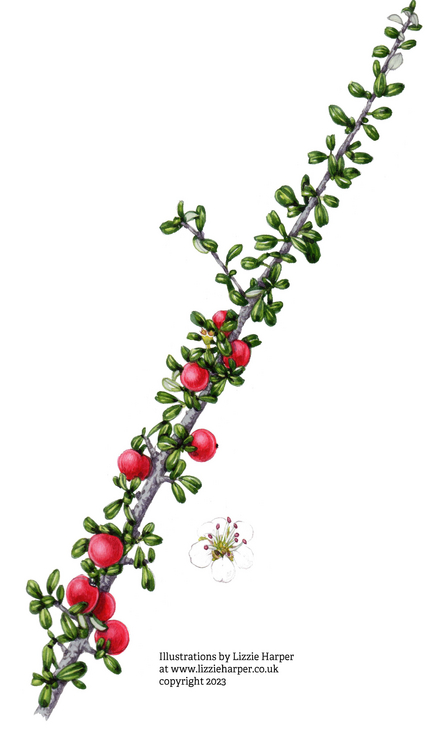
©Illustrations by Lizzie Harper at www.lizzieharper.co.uk copyright 2023 Entire leaved Cotoneaster (C. integrifolius)
- Evergreen low growing shrub
- Leaves: small elliptical, dark green and hairs underside
- Flowers: white, purple anthers
- Berries: late summer crimson colour, holds throughout winter
Himalayan cotoneaster (C. simonsii)
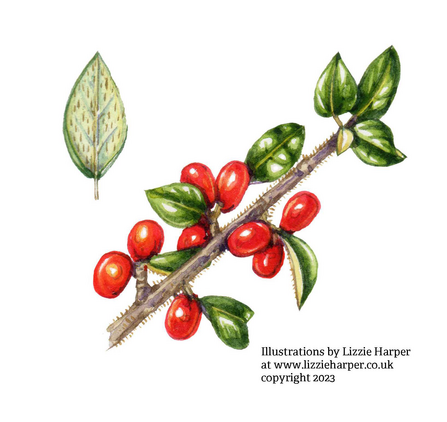
©Illustrations by Lizzie Harper at www.lizzieharper.co.uk copyright 2023 Himalayan cotoneaster (C. simonsii)
- Large hardy upright evergreen shrub
- Leaves: small none serrated, alternate along stem, glossy hairless upper and slight hairs on lower surface
- Flowers: pale pink, red patch centre of petal
- Berries: slightly larger, orange-red in clusters
Hollyberry cotoneaster (C. bullatus)
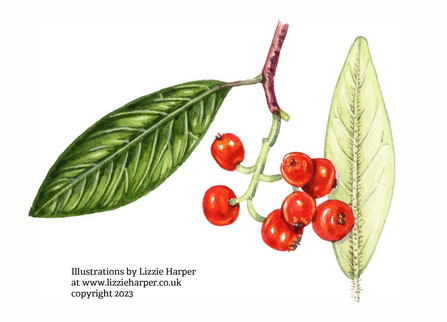
©Illustrations by Lizzie Harper at www.lizzieharper.co.uk copyright 2023 Hollyberry cotoneaster (C. bullatus)
- Much larger deciduous shrub up to 4 metres
- Leaves: matt green, oval and pointed, indented veins growing alternate on stem
- Flowers: pink, 5 petal, white anthers
- Berries: bright red, large slight square-shaped
Small leaved cotoneaster (C. microphyllus)
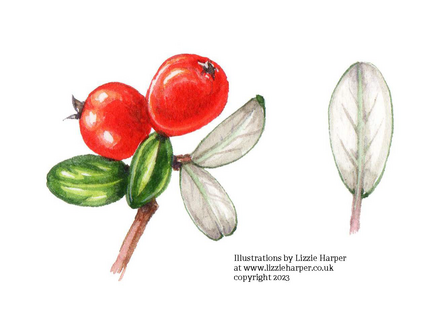
©Illustrations by Lizzie Harper at www.lizzieharper.co.uk copyright 2023 Small leaved cotoneaster (C. microphyllus)
- Evergreen low-lying shrub
- Leaves: glossy green top, grey/white underside, small (1cm length), elliptic
- Flowers: solitary white, 5 petals, dark violet anthers
- Berries: coral red and globular
Wall cotoneaster (C. horizontalis)
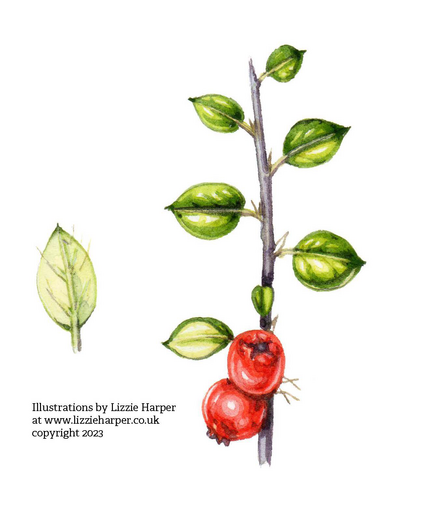
©Illustrations by Lizzie Harper at www.lizzieharper.co.uk copyright 2023 Wall cotoneaster (C. horizontalis)
- Deciduous low growing shrub: herringbone-shaped branches, stems woody dark brown, hard and knotty
- Leaves: small dark green upper, pointed and shiny on both sides, red in autumn
- Flowers: pink, 5 petal with white anthers
- Berries: orange-red
Here’s a handy guide to "Gardening without harmful invasive plants" including cotoneaster alternative shrubs (page 30) to keep your garden buzzing.
The GB Non-Native Species Secretariat has created useful "Tips for gardeners to Be Plant Wise" a campaign to help choose what to grow, how to stop the spread of invasive plants and composting with care after removal.
Record your invasive non-native species sightings, surveys and management on INNS Mapper. Sign up via the link or download the app! It's free to use, providing resources to support INNS programmes to coordinate efforts across England, Wales and Scotland.

®Lottery Heritage Fund in partnership with Welsh Government
This project is funded by the Nature Networks Programme.
It is being delivered by the Heritage Fund, on behalf of the Welsh Government.

